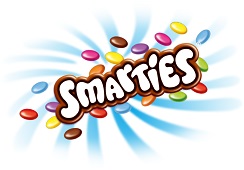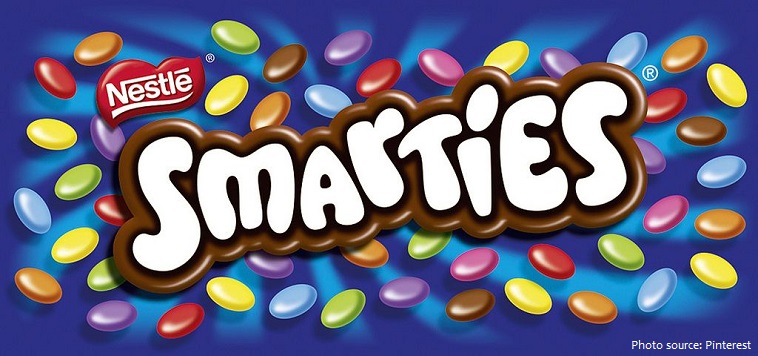
Smarties are colour-varied sugar-coated chocolate confectioner.
They are oblate spheroids with a minor axis of about 5 mm (0.2 in) and a major axis of about 12 mm (0.5 in).
Smarties come in eight colours: red, orange, yellow, green, blue, mauve, pink and brown, although the blue variety was temporarily replaced by a white variety in some countries, while an alternative natural colouring dye of the blue colour was being researched.
Smarties packs available in: 40g, 17g, 150g, 152g Fun Bag, 85g Eggs and 280g Baking bag.
A long-time favourite in many countries including the UK, Germany, Australia, South Africa and Canada.
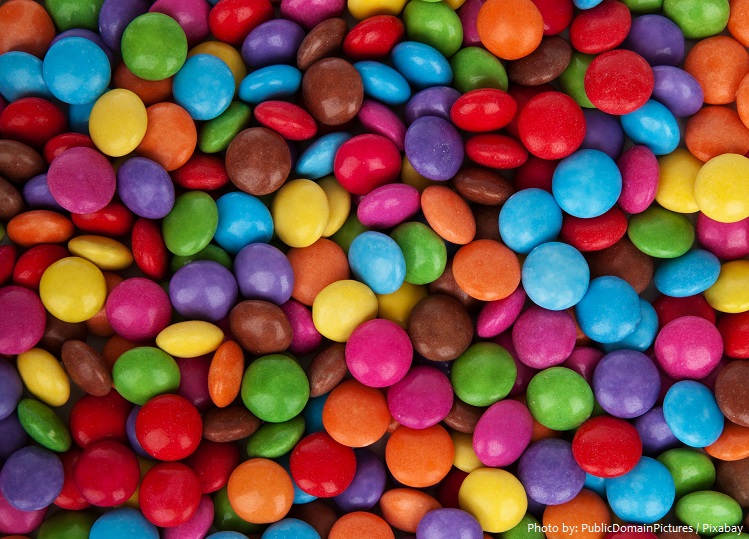
Smarties are not distributed in the United States, where the rights to the name belong to the Smarties Candy Company, which manufactures its own hard tablet sweet under the registered trademark name Smarties.
Rowntree’s of York, England, have been making “Chocolate Beans” since at least 1882.
The product was renamed “Smarties Chocolate Beans” in 1937. Rowntree’s was forced to drop the words “chocolate beans” in 1937 due to trading standards requirements (the use of the word “beans” was felt to be misleading) so adopted the “Milk Chocolate in a Crisp Sugar Shell”.
The brand changed to “Smarties” in 1938 and Smarties tubes were introduced.
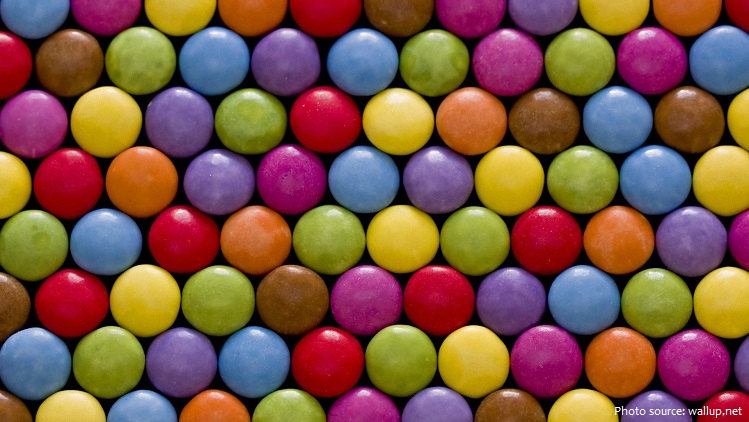
During World War II Smarties were not produced. When the war was over there was a milk shortage, so Smarties were made with plain chocolate for a while.
Smarties in the UK are sold in cylindrical cardboard tubes, capped with a colourful plastic lid usually having a letter of the alphabet on it. The purpose of this, according to a Rowntree’s spokesperson in the 1980s, was for them to be useful as a teaching aid to encourage young children to recognise the letters. Over the last 25 years, Nestlé and Rowntree’s have manufactured five billion Smarties lids. Some lids are very rare and are now regarded as collectors’ items.
In February 2005, the Smarties tube was replaced with a hexagonal design. The rationale behind changing the design was, according to Nestlé, to make the brand “fresh and appealing” to youngsters.

Smarties is also one of the biggest selling boxed Easter Eggs and has special Christmas presentations in Giant Tubes, Novelties, Christmas cartons and in all Christmas selection boxes.
They are also sold in chocolate-and-vanilla ice cream with Smarties pieces in it known as Smarties Fusion. A variant on Smarties ice cream is the Smarties McFlurry, sold by McDonald’s.
Around Christmas, Nestlé Australia and Canada often releases Smarties in the Christmas colours of red, green and white.
In one of the earlier ranges of colours, there was a light-brown Smartie. This was replaced in 1988 by a blue Smartie.

Before 1958, dark-brown Smarties had a plain-chocolate centre, while light-brown ones were coffee-flavoured.
Orange Smarties originally contained orange-flavoured chocolate, however, these days the orange flavour is added to the shell only.
The distinctive blue Smartie, dropped amid concerns over artificial additives in 2005.
Nestle, which manufactures Smarties, reformulated the ingredients of the multi-coloured sugar-coated chocolate sweets to rid them of artificial colours and flavours.
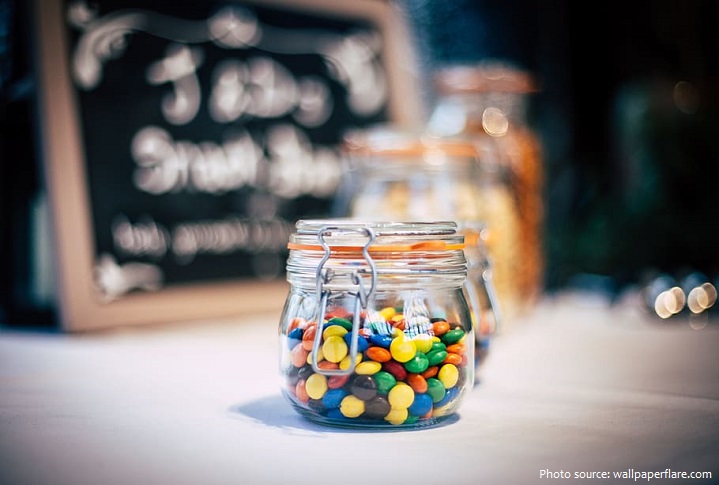
Although the company was able to replicate the seven other colours, the blue Smartie – which became a cult with children because it temporarily stained tongues a dramatic bright colour – proved more of a challenge.
The company introduced a white Smartie, but the decision to banish the blue version prompted some consumers to campaign to bring it back.
More than 20 Facebook groups, boasting almost 2,000 members, were set up to ask what happened to the blue sweets and demand their return.

After an extensive search for a natural coloured dye, Nestle said it had found a way to create the blue sweet, using no artificial colours and flavours, by extracting the blue colouring from a seaweed called
Spirulina.
If the Smarties eaten in one year were laid end to end it would equal almost 102,000 km and if they were put in tubes and these put end to end it would equal almost 29,000 km.
Nearly 17,000 Smarties are eaten in the UK every minute.
Smarties are similar to M&M’s:
The candy: M&M’s — made by Mars — have a thin, crisp coating that easily melts away to nothing. It addsmore texture than flavor to the overall effect. Smarties — made by Nestlé — have a much thicker exterior with a more noticeable flavor, like the crunchy sugar on Jordan almonds.
The chocolate: M&M’s chocolate is sugary and weirdly intense, when you concentrate on it. It tastes like the hot cocoa that’s dispensed out of cafeteria machines. Smarties’ tastes more like mild milk chocolate, and has a creamier texture. And a surprise — the orange-colored smarties are filled with orange-flavored chocolate.
A similar product has been produced by Kneisl company in Holešov, Moravia, Czech Republic since 1907.
